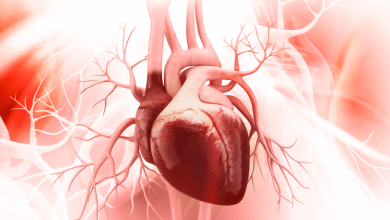Search results
Author(s):
Eric Larose
,
Olivier F Bertrand
Added:
3 years ago
Cardiovascular magnetic resonance (CMR) has found widespread use as an important tool in the cardiologists' armamentarium for several years now, mainly because of superior diagnostic accuracy and ability to perform complete anatomical and functional assessment in a single study without ionising radiation. The following will summarise specific uses of CMR for the interventional cardiologist.
…
View more
Author(s):
Sivabaskari Pasupathy
,
Rosanna Tavella
,
Simon McRae
,
et al
Added:
3 years ago
Early coronary angiography performed during acute MI (AMI) identifies an occluded vessel in most patients with ST elevation MI (STEMI)1 and less frequently in those with non-STEMI;2 however, ≥90 % of patients with AMI have evidence of obstructive coronary artery disease.3 For these patients with overt coronary artery disease (CAD), the benefits of reperfusion strategies and cardioprotective…
View more
Author(s):
Martin H Deininger
,
Juergen Buttler
Added:
3 years ago
The association of electrocardiographic (ECG) abnormalities and intracerebral, particularly aneurysmal subarachnoid haemorrhage (SAH) is a well-known phenomenon. ECG alterations are observed in 50-100% of patients during the acute stage of SAH. Frequently, these effects are clinically not important. Some SAH patients, however, have structural cardiac damage with elevation of creatine kinase…
View more
Author(s):
Ahmed Zwain
,
Mohanad Aldiwani
,
Hussein Taqi
Added:
2 years ago
Author(s):
Andreas Seitz
,
Stefan Baumann
,
Udo Sechtem
,
et al
Added:
2 years ago
Author(s):
Giacinta Guarini
,
Alda Huqi
,
Doralisa Morrone
,
et al
Added:
3 years ago
Although cardiovascular mortality has declined progressively in developed countries, ischaemic heart disease (IHD) and chronic stable angina cause a worse prognosis and poor quality of life and can dramatically increase healthcare costs.1–4 Traditionally, chronic stable angina has been interpreted as reversible episodes of myocardial ischaemia due to the presence of coronary artery disease…
View more
Takotsubo Cardiomyopathy
Author(s):
Esha Sachdev
,
C Noel Bairey Merz
,
Puja K Mehta
Added:
3 years ago
Article
Author(s):
Olivia Manfrini
,
Peter Amaduzzi
,
Maria Bergami
,
et al
Added:
3 years ago
Statins are commonly used in patients with hypercholesterolaemia and in those with cardiovascular diseases – that is, peripheral artery disease and coronary artery disease (CAD) – for the prevention of atheromatous plaque development, progression and complications, with the aim of reducing subsequent major adverse cardiovascular events (MACE), i.e. cardiac death, acute MI, stroke and heart…
View more
Author(s):
Maria Chiara Scali
,
Doralisa Morrone
,
Mario Marzilli
Added:
3 years ago
As coronary angiography is of limited value in defining the functional significance of a stenosis, the timely article by Balanescu in this issue of European Cardiology Review rationally proposes to integrate the anatomic information with a functional assessment, either by measuring coronary flow reserve (CFR) or intracoronary artery pressure with fractional flow reserve (FFR). CFR measurements…
View more
Author(s):
Alexandros Klavdios Steriotis
,
Sanjay Sharma
Added:
3 years ago
Hypertrophic cardiomyopathy (HCM) is a hereditary primary myocardial disease that is most commonly caused by mutations within genes encoding sarcomeric contractile proteins and is characterised by left ventricular hypertrophy in the absence of a cardiac or systemic cause.1,2 The condition is inherited as an autosomal dominant trait and has a prevalence of one in 500.3,4 Marked genetic…
View more













 « First
« First